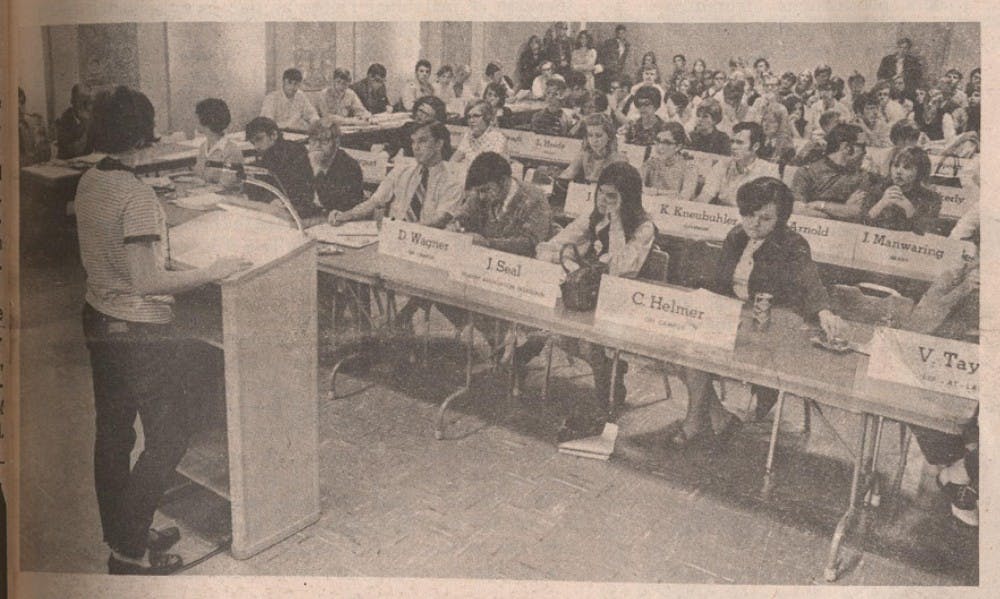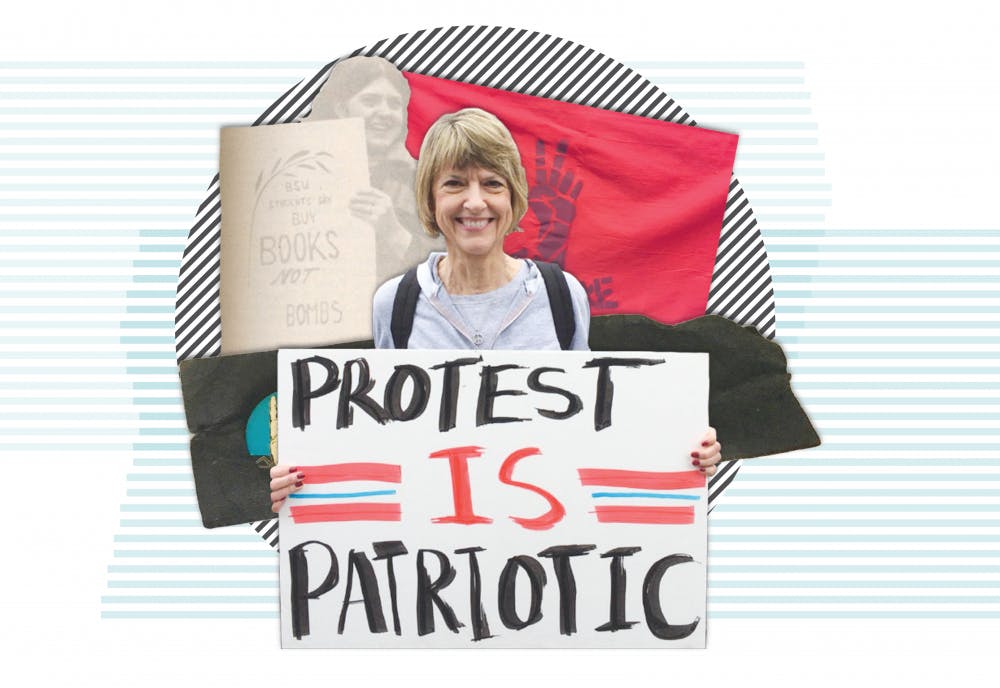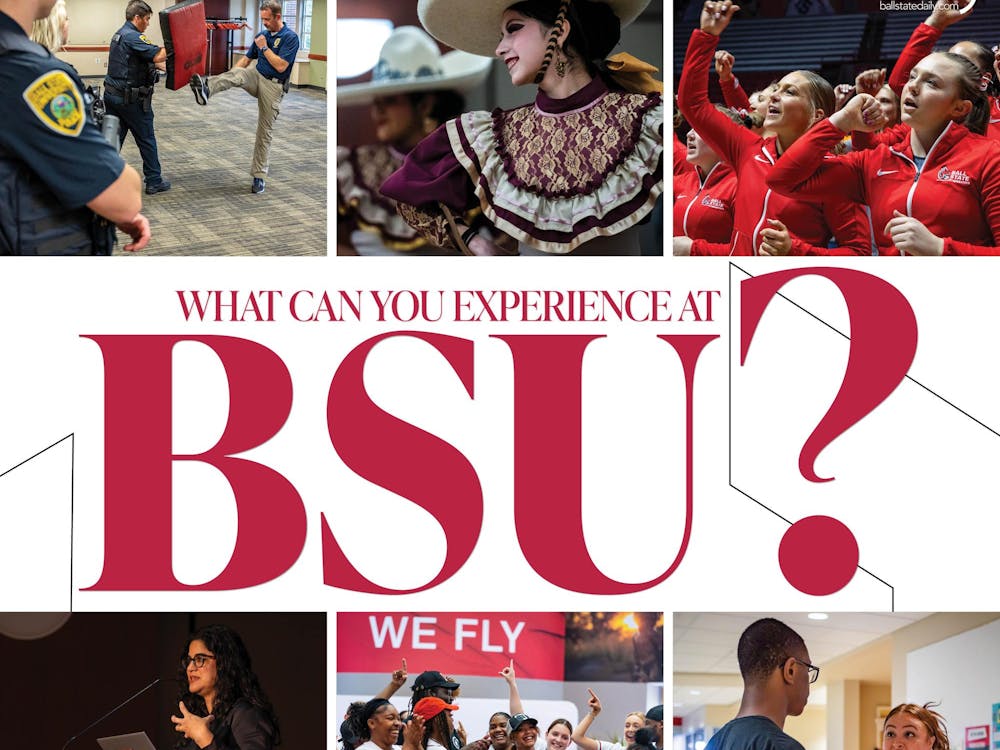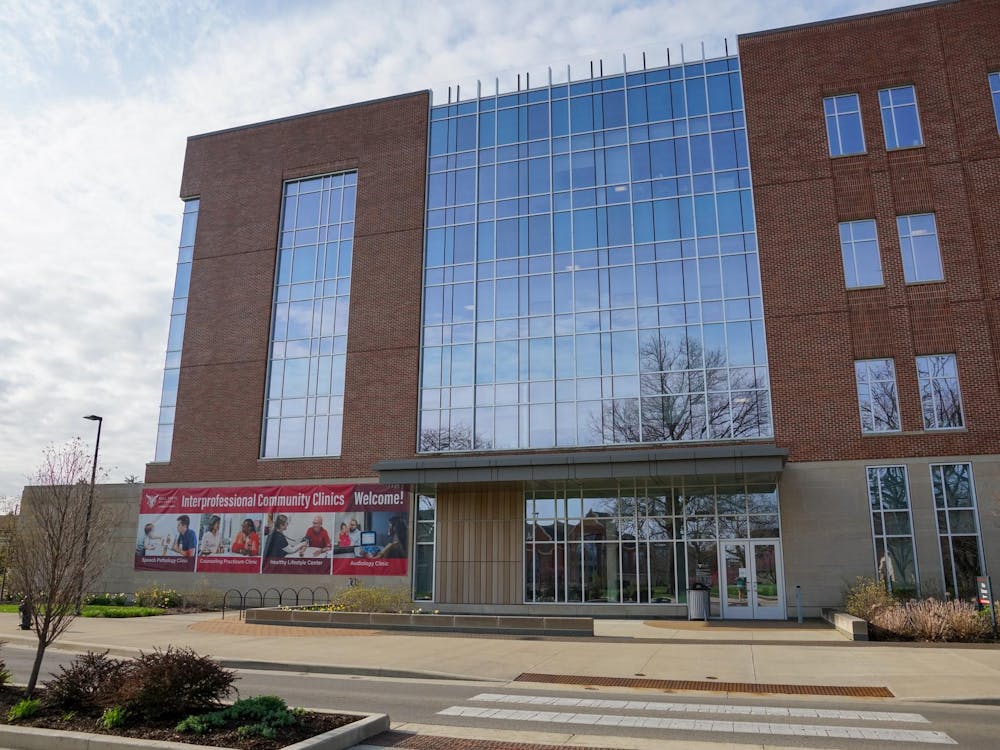“If one life is spared from the senseless killing in Vietnam, I will consider the Moratorium a success,” Mary Munchel, now Mary Posner, told The Daily News in a 1969 article when she was a junior at Ball State.
Fifty years later, the university’s Vietnam Moratorium Committee (VMC), an extension of the nationwide committee developed to protest against the Vietnam War, will host a reunion Thursday at the Alumni Center and a conference Friday at the L.A. Pittenger Student Center.
Posner first found out about the National Vietnam Moratorium Committee at a July 1969 congress in El Paso, Texas, for people involved in student government across the country. After returning to Ball State in September, she said she failed to find someone willing or experienced to organize the committee, so she decided to do it herself.
READ MORE: Kent State spurs Ball State into action
Some of the committee’s activities, Posner said, included marches, a vigil on the Arts Terrace where the names of American servicemen killed in the war were read and 80 white crosses were planted outside the chapel of the Newman Center, a church near the university.
“There was a lot of spontaneous [and] creative ideas from the people in the committee,” Posner said. “That’s how it happened — a lot of grassroots from the students and some guidance from the national committee.”
As part of the first National Vietnam Moratorium Day, the first protest at Ball State was held Oct. 15, 1969. Posner said this was followed by monthly protests lasting from November 1969 to April 1970.
Bill Britton, another student studying at Ball State at the time who still resides in Muncie, also took part in the protests. Britton said he decided to join the protests after participating in a debate on the Vietnam War at a local church.
Moratorium March on Washington:
While Britton was unable to go, Posner took part in a national protest in Washington, D.C. Nov. 15, 1969.
“It was incredible seeing such a massive crowd,” Posner said. “I don’t really think we got close enough to see much but it was just good to be there with people with the same kind of sentiments as us and the same signs. I still have my armband and my button from that day.”
While Posner said she along with others went with the chaplain of the Newman Center, a church near Ball State, Charlie Heitkamp, another Ball State VMC member, recollects going to the Washington protests seated in U-Haul-like box trucks.
Heitkamp also recollected being arrested in Washington along with others in the afternoon that day. He said he was walking down the street with other protesters when he came across an old man in his 60s or 70s headed to work and started talking with him.
“We’re talking back and forth and the police just came in from behind and swept us up, threw us in a paddy wagon and ended up in a jail cell with him and 10 other people,” he said. “I spent most of the day there … cost me $10.”
According to the National Archives, over 500,000 people joined the moratorium march in Washington, D.C., that day.
Criticism of the protests:
Posner said while there was a national fervour against the Vietnam war, criticism against the war wasn’t as strong at Ball State.
“I don’t think very many people were even paying attention to it,” she said. “Ball State was very conservative at that time and it was hard to get any fervour against the war.”
Posner said the committee faced “a great deal of opposition” back then with the student senate refusing to vote for a resolution supporting the VMC.
Marie Kingsbury, a VMC member who worked as one of the managing editors for The Daily News at the time, said the newspaper took an editorial stance that was not in support of the VMC, as shown in the VMC scrapbook of newspaper articles on its 50th anniversary website.
Kingsbury added that while there were staffers at the newspaper who didn’t support the protests, there were some who were sympathetic to the VMC as well. In general, she said supporters of the VMC were very much a minority on campus.
“It was a horrible time back then and it really tore people, you know, friends and family members apart if you weren’t on the same side,” she said.
While she was a member, Kingsbury added that she wasn’t a “very active participant” in the VMC. She said wouldn’t attend its meetings on a regular basis and would usually attend some of the protests and events on campus as an observer.

In this photo from Oct. 2, 1969, Mary Posner, then Mary Munchel, appeals for senate approval of the Oct. 15 moratorium during Ball State's student senate meeting. The senate once again did not approve the proposal. Digital Media Repository, Photo Courtesy
Activism today:
David Harris, a former Stanford University student body president who founded the draft-resistance movement and organized a civil disobedience against military conscription which led him to being jailed for two years, said the Vietnam war protests “offer a precedent for young people today.”
“Democracy functions best when individual citizens take responsibility for that democracy in their own actions,” said Harris, who will be the keynote speaker at Friday’s conference. “If ever there was a time that needed an uprising like the one we organized, it’s now.”
He said protests back then were more targeted and since people weren’t as used to large-scale protests, they were “immediately impactful,” and focused the national attention on the war “in ways nobody has quite mastered yet.”
While there were other issues being protested toward the end of the 60s and the beginning of the 70s, Posner too said an advantage the VMC had back then was that the Vietnam War was “the issue.”
“I think nowadays, it’s hard to know what to protest against because there’s so many things going on,” she said. “There’s so many issues to choose from, it might be more difficult to mobilize a large group behind one issue.”
However, she said an advantage activists have today is the ability to communicate instantaneously, primarily through social media. Posner described communication back then as being “a lot more cumbersome” — using phones with telephone cords, having to physically mail things and the inability to make quick copies of documents.
As an advice to young activists today, Harris said “movements succeed as long as they are open ended.”
“Don’t approach this by drawing a line in the sand and saying you’re with us or against us,” he said. “Approach this as everybody has an opportunity to join you. Don’t pick fights with the police, don’t yell at people who don’t need to be yelled at.”
He added that means and ends are “the most fundamental question,” and “you don’t get good ends by adopting evil means.”
Posner said many Vietnam veterans didn’t like what the VMC were doing because they might have been physically or mentally injured during the war, but the VMC made “a huge effort” to “reach out to Vietnam veterans and tell them we weren’t against them, we were against an unjust war.”
“Whatever it is you believe in, talk about it in a civil way,” she advised activists today. “Even though we were protesting, we were never mean, we were never violent. We tried to listen to whatever people had to say.”

Bill Britton and Charlie Heitkamp, two former members of the Vietnam Moratorium Committee (VMC) at Ball State, meet Oct. 4, 2019, a week before the VMC's 50th anniversary conference. Years after the 1969 protests, Britton and Heitkamp have helped serve veterans and continue to be involved in their local communities. Eric Pritchett, DN Illustration
Where they are now:
Today, all the aforementioned activists are still involved in the communities they live in or participate in activism related to various national issues.
Britton, who intended to work as an art teacher, eventually ended up working for several community organizations doing social service and working with veterans.
Apart from being a neighborhood community council member, Heitkamp is a member of a social club called the Elks, where he heads a volunteer group which regularly engages in recreational activities with people at the Veteran’s Administration center.
After working as a reporter for the Chicago Tribune, Kingsbury went on to work for an organization in Wisconsin that serves victims of domestic violence.
Due to his age, Harris said he is involved in activism today “only in an emeritus fashion,” but walks in the event of a march or demonstration, particularly related to climate change.
Posner currently practices as a clinical psychologist in Southern Indiana helping her patients “find peace within.” She also plans on participating in gun control- and climate change-related activism once the VMC reunion and conference is done.
The VMC protesters at Ball State had a banner with the word “Peace” written on it that was posted across the sidewalk near the then library at North Quad, she said.
“When I look at that flag, it brings up the memory of that first day, Oct. 15, our first protest, and we had a march and we walked under that banner,” Posner said. “When I see that picture, just the memory of marching on that day would be my fondest memory.”
Contact Rohith Rao with comments at rprao@bsu.edu or on Twitter @RaoReports.





